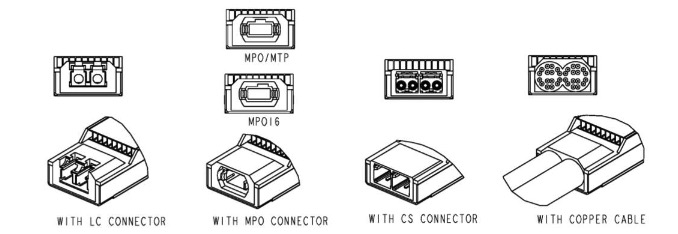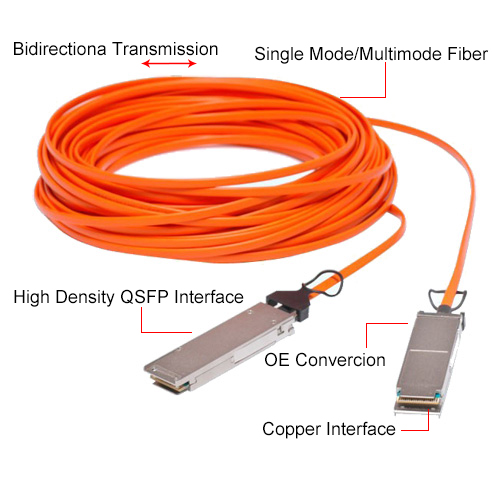OSFP is short for Octal Small Form Factor Pluggable. it is being designed to use eight electrical lanes and each lane for 50GBE to deliver 400GbE. compared with QSFP transceiver, It is slightly wider and deeper, but it still supports 36 OSFP ports per 1U front panel, enabling 14.4 Tbps per 1U.
OSFP is a conventional style of electrical interconnect, leveraging best practices that the industry has learned in the past from SFP and QSFP connectors. The electrical connector in OSFP has a single row of contacts on both top and bottom, and it provides robust electrical and signal-integrity performance. Because it’s faceplate pluggable and eld replaceable, it has a single-receptacle electrical connector.
One of the nontraditional aspects of OSFP is that it integrates thermal management (heat sinking) directly into the form factor to help cool the module, similar to the microQSFP form factor that predates it. An OSFP integrated heat sink is intended to enable modules with up to 15 W of power in a switch chassis with conventional front-to-back air ow. This accomplishes two things over a more conventional riding heat sink: It eliminates the high thermal resistance between the module and the heat sink, and, secondarily, once the air exits the back of the module form factor, it is available for cooling the silicon switch or compute chips that are downstream inside the equipment enclosure.
The OSFP receptacle does not offer backwards intermate-ability to existing modules since it favors optimizing the electrical, packaging, and thermal aspects over legacy application support.
There are multiple type of connectors supported by OSFP; Duplex LC, MPO/MTP, CS, and copper.

Module Color Code








